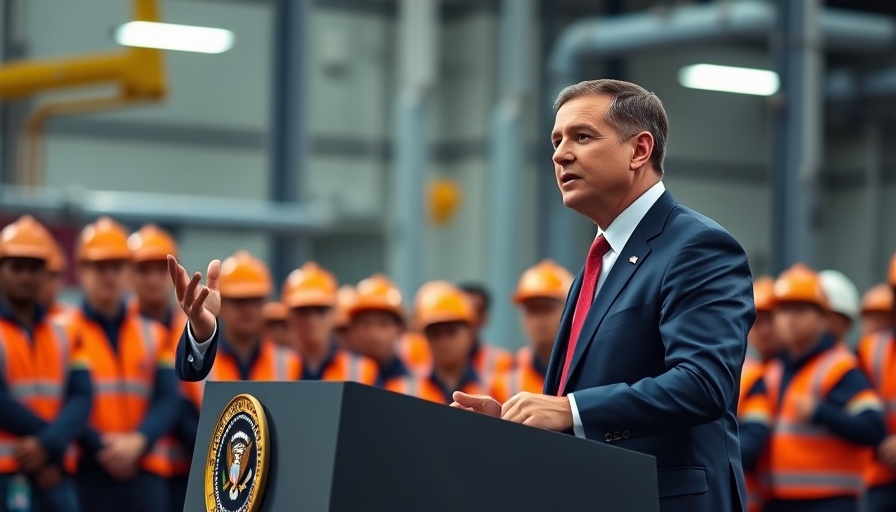
Understanding the Recent Tariff Changes Announced by Trump
In a significant policy shift, President Donald Trump has announced a doubling of tariffs on steel imports to the United States, increasing them from 25% to 50%, effective June 4. This decision was made to bolster the domestic steel industry and protect American jobs, particularly emphasizing national security concerns. The announcement was made during a visit to the U.S. Steel’s Mon Valley Works facility in Pennsylvania, where Trump highlighted the importance of a strong steel sector to the nation's economy and security.
The Rationale Behind the Tariff Increases
President Trump stated that a robust steel industry directly impacts both American dignity and economic prosperity. As he pointed out, jobs in the steel and aluminum sectors are vital for the workforce and the overall industrial capability of the nation. According to Trump, ensuring that these industries thrive is not merely an economic issue; it is fundamentally about national security, underscoring that reliance on foreign steel could weaken America’s defense capabilities.
The Deal with Nippon Steel: A Ray of Hope?
During the announcement, a potential investment deal between U.S. Steel and Japan-based Nippon Steel was mentioned, wherein Nippon Steel is expected to invest $14 billion into U.S. Steel. While the official details of this partnership remain undisclosed, its success could bring stability to the American steel industry and potentially counterbalance the economic ramifications of the increased tariffs. Keeping U.S. Steel’s headquarters in Pittsburgh as part of this deal signals a commitment to maintaining jobs and manufacturing in the United States.
Tariff Policies Under Scrutiny: A Chaotic Landscape
The announcement comes at a time when Trump's tariff policies are facing legal scrutiny. Recent court rulings have paused or adjusted some tariffs, but those decisions don't extend to the steel tariffs, which are being justified under national security laws. Analysts believe that the tumultuous nature of these tariff policies—which have fluctuated dramatically—has caused significant uncertainty in shipping and business planning across various sectors.
Potential Economic Ramifications
Experts warn that the repercussions of such tariff increases could be extensive. There are concerns that resourcing manufacturing and supply chains back to the U.S. could take years and might cost billions of dollars. Furthermore, while the aim of job creation is noble, many question whether the tariffs will lead to meaningful employment increases, given the complexities of modern manufacturing and global supply chains.
What Lies Ahead: Predictions and Trends
As the U.S. navigates this new trade landscape, the future of the steel industry remains uncertain. There are potential risks and challenges, including retaliatory measures from trading partners and a possible increase in costs for consumers and businesses reliant on steel. Experts will be watching closely to see how these policies unfold and what they mean for both local economies and the national economy as a whole.
Taking Action: What You Need to Know
For industries relying on steel, understanding these tariff changes is critical for strategic planning. Companies should review their supply chains to assess the impact of increased costs and examine alternative sourcing options. Moreover, staying updated on legal developments and market trends will be essential for informed decision-making in this evolving landscape. Individuals working in affected sectors may want to consider their job security and adaptability in the face of industry shifts.
Conclusion: The Importance of Being Informed
As we witness the effects of these tariffs unfold, staying informed and prepared will prove essential for businesses and consumers alike. The national conversation on trade and industry is heating up, and understanding the implications of such policies will empower stakeholders at every level. It is more important than ever to engage in discussions surrounding trade policies, as these decisions will create ripples throughout the economy.
 Add Row
Add Row  Add
Add 




 Add Row
Add Row  Add
Add 








Write A Comment